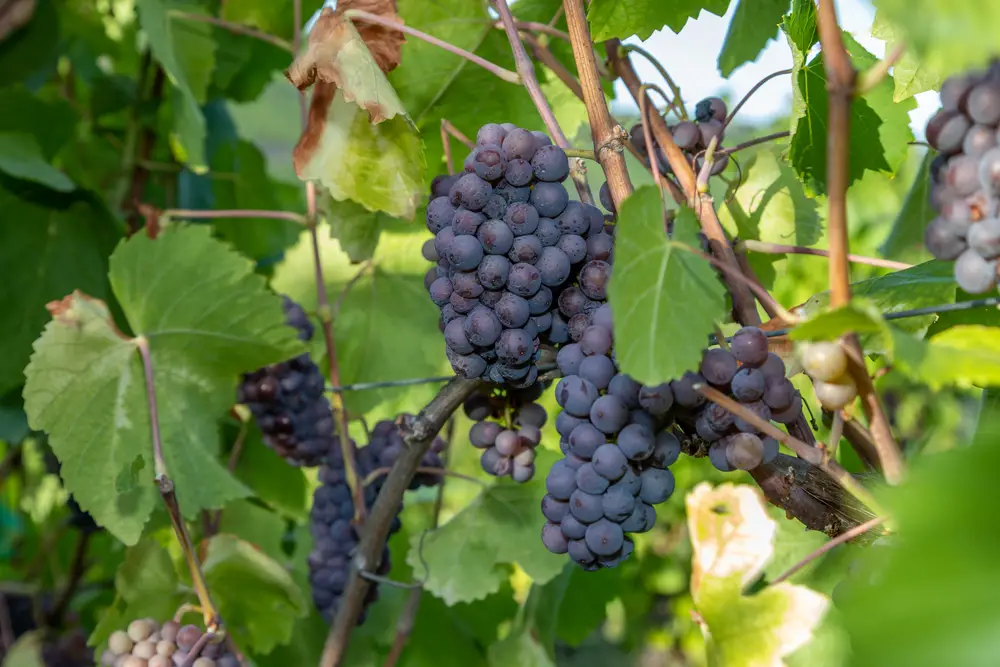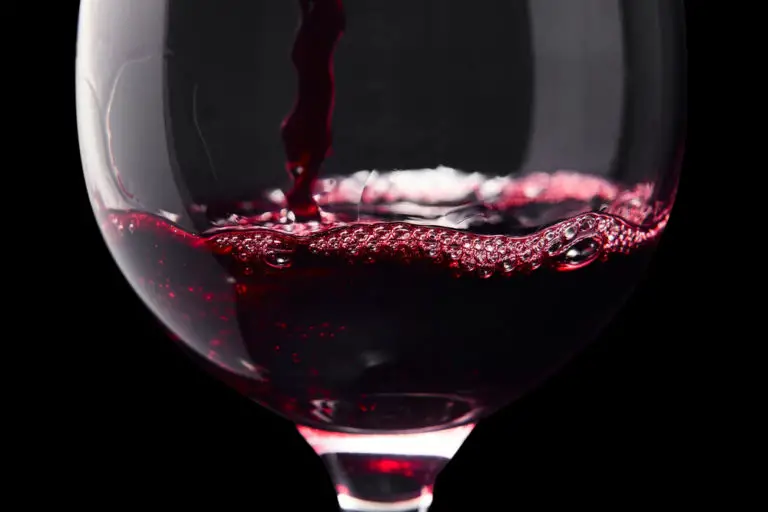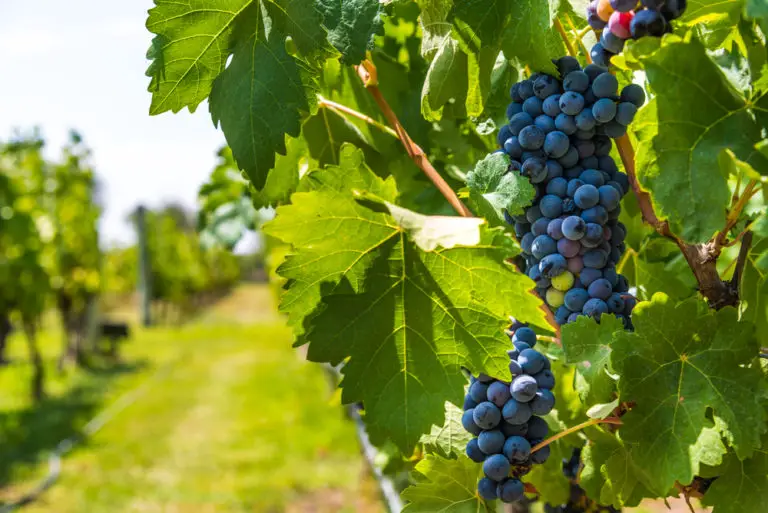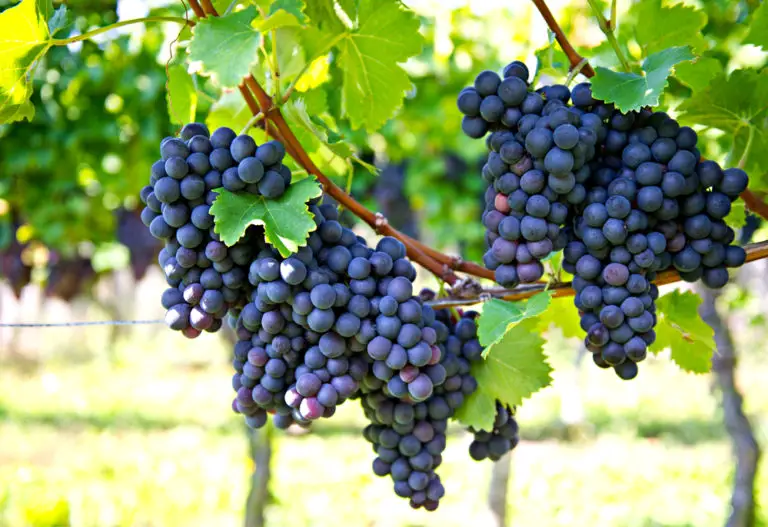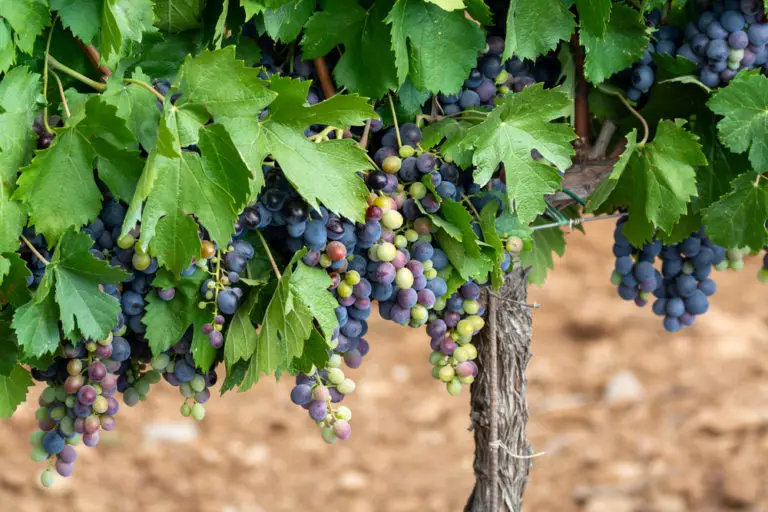Pinot Grigio: The Beginners Guide (2024)
Pinot Grigio is a widespread wine grape that is also known under the different synonyms in the regions of Germany, Austria, and France. The wines made from this grape are usually full-bodied with a smooth mouthfeel. Although its grapes are reddish to gray-blue, it is mainly used to make white wine, with small quantities of rosé wine also being made.
Wine Color: Light Gray
Characteristics: Medium-Light Body, Low Tannins, Medium-High Acidity
Color of berry skin: Reddish to red-gray berry skin
Flavor: Dry
ABV: 11.-13.5%
Origin: Burgundy, France
Notable Regions: Italy, United States, France, Germany, Australia
Most Expensive Bottle: Heppenheimer Centgericht Ruländer Trockenbeerenauslese
Common synonyms: Grauburgunder, Pinot Gris, Grauer Mönch, Fromenteau
- What is Pinot Grigio?
- Known Regions for Pinot Grigio
- Popular Blends of Pinot Grigio
- How to Enjoy Pinot Grigio?
- How is Pinot Grigio Made?
- History of Pinot Grigio
- Alternatives for Pinot Grigio
What is Pinot Grigio?
Pinot Grigio originally comes from Burgundy and is a mutation of Pinot Noir, known in German as Spätburgunder. The Pinot Gris, aka Pinot Grigio, aka Grauer Burgunder, has a reddish berry skin when it is ripe. It looks more like a red grape variety and not like white wine is made from it.
Depending on the location and the hand of the winemaker, a Pinot Grigio can taste light and tasty or full-bodied and full-bodied. Classically, however, it comes as a crisp, fresh-fruity, and dry representative. Mostly rich in extracts, aromatic, and rather low in acid.
The wines made from Pinot Grigio have a rather low acidity but still, manage to be voluminous and rich in extracts. The Pinot Grigio alcohol percentage is high and not infrequently reaches 13% vol.
The large and unreflected demand for Pinot Grigio led to enormous mass production in Northern Italy, which first damaged the quality and then the Pinot Grigio name. Pinot Grigio pronunciation is pee·now gri·jee·ow.
Pinot Grigio vs. Chardonnay vs. Sauvignon Blanc
Pinot Grigio and Chardonnay look almost identical in a wine glass, but that is where the similarities end. Pinot Grigio is light with hints of green melon, while Chardonnay is slightly heavier and has hints of freshly cut grass.
Pinot Grigio usually tastes less sweet than Chardonnay because of the higher acidity. Pinot Grigio is light with hints of green melon, while Chardonnay is slightly heavier and has hints of freshly cut grass.
Pinot Grigio is a delicate, fresh, and light white wine that can be either dry or sweet. Compared to the Sauvignon Blanc, the Pinot Grigio is slightly fruitier and has a fuller body.
The Sauvignon Blanc is also a fresh white wine, but it is slightly higher in acids and has spicier influences than the Pinot Grigio. If you want a lighter, more approachable wine, the Pinot Gris white wine is ideal. If you want a fresh wine with more spices and herbs, choose the Sauvignon Blanc.
Pinot Grigio Characteristics
The Pinot Grigio white wine shines in strong golden yellow tones in the glass. It has lower acidity and is rich in body and bulky. The nose is caressed by great freshness and delicate apple notes. The Pinot Grigio characteristics accompany fresh fish dishes. But the wine also goes well with carpaccio with grated cheese and pesto. Of course, the wine is also suitable as a summer patio wine or aperitif.
The white pinot grigio is often aged in stainless steel tanks, mostly dry, medium-bodied, and slightly acidic with a pale yellow to golden color. More substantial, acidic wines are marketed under the Ruländer name.
Due to the expansion in wooden barrels or barriques, the Pinot Grigio wine color becomes darker, more towards amber, and the acid degradation takes place biologically. Aromas of unripe nuts and almonds and butter can often be found here. Otherwise, aromas of pear, dried fruit, pineapple, and citrus, but also vegetal aromas are attributed to it.
Pinot Grigio Taste Profile
Depending on the location and the hand of the winemaker, a Pinot Grigio taste profile can be light and tasty or full-bodied and full-bodied. Classically, however, it comes as a crisp, fresh-fruity, and dry representative. Mostly rich in extracts, aromatic, and rather low in acid.
It unfolds wonderful fruit aromas on the palate: apple, citrus fruits, and velvety pear, peach, or fig notes are typical of a Pinot Grigio flavor profile. There are also nuances of walnut or almond, butter, and honey.
With appropriate development, it can definitely have storage potential and enrich a high sugar content. In some regions – especially in Alsace – it is often made sweet because of these properties.
The Pinot Grigio color can vary from honey to amber yellow, but can also show clear red and pink reflections. On the palate, the noble drop from northern Italy often enchants with opulent fullness and also lush fruity notes. The Pinot Grigio profile is considered the perfect aperitif wine and an extremely versatile food accompaniment.
Pinot Grigio Ageability
Wine breathes, it needs oxygen to live. It is especially true for its existence in the bottle, which experts refer to as “fine oxidation”, in which volatile elements or woody aromas decrease with age.
The processes that take place during bottle aging are still largely in the dark in the truest sense of the word, even for research. What is certain is that storage temperature accelerates oxidation and other chemical processes, with the rate of reaction doubling for every ten degrees Celsius increase in temperature.
It is essentially also decisive for the course of the life curve of wine: the more leisurely it is here, the longer a fine drop will last. The taste-defining elements such as acid and extract make up only about one and a half to three percent – but they provide the decisive “movement” during the maturing process.
If Pinot Grigio varietal is simply matured, it should and should be drunk young. If the white wine is matured in wooden barrels, it should be drunk up to an age of 10 years.
Notable Regions for Pinot Grigio
The vast majority of Pinot Grigio wine ingredients is produced in the North East regions of Italy. Italy exports a huge amount of their Pinot Grigio every year, with the UK and the US being the biggest export locations. Germany (another Grigio grower) also produces a reasonable amount of the stuff but tends to keep most of it to themselves. Here are the details of the Pinot Grigio region:
Italy
Northeast Italy (Veneto, Friuli-Venezia Giulia and Trentino-Alto Adige) is the heart of the Pinot Grigio ingredients growing region. The region exports large quantities of wine each year, mainly to the UK and US. Pinot Grigio is also rarely the basis for sweeter or dessert wines in Italy. Semi-sweet or sweet Pinot Gris is more associated with Alsace and on a much smaller scale with New Zealand.
Germany
Pinot Grigio is known as Grauburgunder wine in Germany. The wine produced in regions here has a lighter body, higher acidity, and is more multifaceted than Pinot Grigio. It is also grown in the neighboring countries of Switzerland, Hungary, and Slovenia. Since the Pinot Grigio vineyard in these regions are mostly located in the mountains, the grapes produced here have high acids and are mineral-driven.
Croatia
In Croatia, Pinot Grigio is known as Pinot Sivic. A Pinot Gris / Pinot Grigio from hilly Croatia (from Međimurje to Moslavina), often has a rich and intense aroma, where the remnants of sugar are often present and the wine exudes freshness and vibrancy. The one from Slavonia and the Danube region looks much more like a mature one from Friuli in Italy.
France
Considered as one of the ‘noble grapes,’ Pinot Gris is widely grown in northeastern France, bordering Germany. It is specially harvested for making sweeter styles of wines that are either achieved by the presence of botrytis or by a late harvest. The wines produced here are flavorsome, have fuller-bodied, and are more complex than Italian Pinot Grigio.
New World
The refreshing style of Pinot Grigio is very successful in different countries. It is done particularly well in the United States (where it is affectionately known as “Greej”) and Australia. Some wineries in the New World have chosen to produce both Pinot Grigio and Pinot Gris wines. These are typically marketed as aperitifs and as plain white wine.
Popular Blends of Pinot Grigio
Pinot Grigio is a popular choice for Cuvee or as a blend. It is used in combination with other varieties and is known to produce many popular white wine blends. These blends come from different parts of the world. Let us look at some of the popular Pinot Grigio blends.
Torrevento Oro Bianco IGT 2020
This cuvée shines light yellow with green reflections like pure gold in the sunlight. The marriage of these aromatic grape varieties reveals fine citrus and pear aromas in its delicately fruity bouquet. Floral impressions are added subtly. On the palate, the full potential of this extraordinary combination comes to light. It is a blend of Pinot Grigio and Trebbiano.
Nittnaus Spätlese Heideboden 2019
This wine is a blend of Chardonnay, Grauburgunder, Muskat Ottonel, and Riesling. It has a beguiling fruit explosion of exotic pineapple, yellow apple, pear, peaches, and mirabelle plum as well as herbal nuances that emerge from the bright yellow. On the palate, the seductive intense sweetness is wonderfully balanced with the fresh acidity.
Villa Antinori Toscana Bianco IGT 2020
The straw yellow white wine is a real charmer. White flowers, young peach, and fresh pineapple define the bouquet. On the palate, Antinori’s Bianco impresses with its incredible drinking flow, juicy fruit, and persistence in the finish. An absolutely summery wine that conjures up a little sunshine on your palate even in late autumn!
Korrell Steinmauer 2018
A light gold shines towards the viewer and tempts with fruity aromas of bananas, pears, dried apricots, and roasted toast. Pear, banana, and toast accents are also tempting on the palate, but here they enchant with a hint of Mirabelle plums and spices such as warm vanilla. It is a blend of Chardonnay, Grauburgunder, and Weißburgunder.
Klumpp Cuvée N°2 2017
This blend of Grauburgunder, Pinot Blanc, Pinot Gris, and Weißburgunder is a perfect ratio of meltiness and density to freshness and juiciness. Aromas of apple, pear, and quince emerge from the light yellow Cuvee. The scent of local fruits like juicy quinces, yellow apples, and pears fills the air. This local fruit basket shows all its skills on the palate and inspires both Pinot Gris and Pinot Blanc lovers.
How to Enjoy Pinot Grigio?
Pinot Grigio will taste awful if it is served warm or you do not pair it with the right food. Wines must be served at a recommended temperature, with the right food pairing and perfect stemware. The following suggestions will make your glass of Pinot Grigio interesting.
Food Pairings
With crisp, sparkling fruit or full-bodied maturity, sometimes aged in oak barrels for an intense wine with a note of wood – the Pinot Grigio has a very diverse range of aromas. Pinot Grigio wine pairing can be used in a variety of ways but is also very suitable as an aperitif. The fresh and mineral wines are often served with classic Italian cuisine.
So they go well with fresh salads, minestrone, light casseroles, but also with pasta, fish or seafood, and mild cheese. Slightly richer and spicier Pinots also harmonize very well with poultry, mushroom dishes, light roasts, and grilled fish.
But they also develop their full range of Pinot Grigio flavor very well in combination with game dishes or strong cheese. Pinot Grigio can actually be used universally as an accompaniment to a meal and is also an excellent guest at a summer barbecue party. The noble sweet Auslese and fruity Spätlese are often served with high-fat blue cheese and desserts with almonds, marzipan, and honey.
Temperature
The aspect is often overlooked: the wine temperature accounts for a large part of the taste of a wine. Feeling too warm or too cold can have a significant impact on enjoyment.
In addition, the drinking temperature for the different types of wine, such as white wine, red wine, and rose wine, varies greatly: white wine tastes best chilled, red wine fresh from the fridge is not recommended.
Therefore, for the perfect drinking pleasure with the different varieties, a few rules for the right wine temperature must be observed. Only in this way can the numerous aromas fully develop.
If the wine is not at the perfect temperature, you should temper it. A technical term, but it only means that you either warm up or cool down the bottle of wine. The lighter a wine is, the cooler it needs to be. Heavy wine, on the other hand, is drunk warmer.
The ideal temperature to drink Pinot Grigio is 10°C-14°C.
Stemware
Most white wines and numerous rosés are enjoyed chilled. It is therefore important to choose glasses with a sufficiently long stem because this way the warm hand of the connoisseur stays far enough away from the belly of the glass. In this way, the wine keeps its cooler temperature longer, and the desired aroma can reliably unfold.
A classic white wine glass has a rather narrow and medium-sized bowl. It also protects against heating up too quickly, with the narrower opening promoting the sweetness impression at the tip of the tongue. From a white wine glass, the drop flows over the tip of the tongue to the palate, where it unfolds its acidity.
White wine glasses may be slightly larger if they are very powerful drops with a lush body. These drops usually include those that matured in wooden barrels before bottling or premium wines such as late harvests. Thanks to the slightly bulbous goblet, the wine has more contact with oxygen and can also develop hidden aromas better.
How is Pinot Grigio Made?
Wine has been a popular drink for thousands of years. The traditional methods of wine production have not changed that much in their basic features. But how exactly is wine made? In our guide, we present the decisive steps from the harvest of the Pinot Grigio meaning grapes to the wine in the glass.
1. Harvesting
At the beginning of the wine production is the harvest of the Pinot Grigio grapes, which is also referred to as harvesting. During or after the harvest, the grapes are partially destemmed, i.e. separated from the stalk. However, the pinot grigio grape color does not decide whether a red wine or white wine is produced. The grape juice is light in both grape varieties.
2. Crushing
During crushing, the Pinot Grigio grape is usually separated from its stems. The grapes are then crushed in a large press. So that a mixture of pulp, seeds, stalks, and grape juice is formed. White wine is often made with must fermentation, separating the solids and using only the juice.
3. Fermentation
Fermentation begins as early as mashing, during which coloring and flavoring substances, such as tannins or phenols, are released and transferred to the later wine. The taste, as well as the sensory and structure of the later wine, are decisively influenced by the mashing. The fermentation usually lasts several days and is usually shorter for white wines than for red wines.
4. Pressing And Filtering The Mash
After fermentation, the mash is pressed. The solid components are separated from the liquid components (must). Gentle pressing of the mash is of great importance so that no bitter substances from the seeds get into the juice. After pressing, there are still a lot of cloudy substances in the wine. To remove the suspended particles, various processes are used to “fine” the wine, especially with Pinot Grigio winemaking.
5. Barrel Aging
After pressing and filtering the mash, the wine is stored. The fermentation of the mash is usually not sufficient, so cultured yeasts are now added to the mash. Stainless steel tanks or oak barrels are used for aging. Not only Pinot Grigio alcohol is produced in aging but also many other compounds that influence the character and taste of the wine.
6. Bottle Aging And Storage
Even after bottling, the wine continues to mature and can be stored. Unlike whiskey, for example, wine continues to mature and can continue to develop its aromas over the years. Whether it makes sense to store the wine bottle for several years depends heavily on the grape variety, the wine quality, and possibly also the Pinot Grigio alcohol content.
History of Pinot Grigio
Pinot Grigio wines most likely come from Burgundy in France, from where the grape began its triumphal march through Europe in the 14th and 15th centuries.
Today, the grape variety is not one of the top 10 grapes grown worldwide, but it occupies a very prominent place, especially in Europe. It originally comes from Pinot Noir (or Pinot Nero, Spätburgunder) and is therefore also closely related to Pinot Blanc (Pinot Bianco, Weißburgunder).
In Italy, the Pinot Grigio vines are almost exclusively found in the north of the country: the most well-known growing areas include the Veneto, Lombardy, and Trentino-South Tyrol regions, where the Kurtatsch winery presses highly respectable wines.
Pinot Grigio is the most important grape variety in Friuli. Especially in the Collio, near Austria and Slovenia, the strong types of Pinot Grigio are characterized by a certain minerality. As a model winery, the Komjanc family is highly recommended.
In the last 20 years of Pinot Grigio history, the demand for Pinot Grigio from Italy has risen sharply: 80 percent of the white wine is now exported, mainly to China, North America, Japan, and the countries of Europe.
Alternatives for Pinot Grigio
You do not always have to grab a bottle of Pinot Grigio to get a crisp and refreshing white wine. These Pinot Grigio alternatives also share most characteristics and can be enjoyed equally by this wine lover. Check these wines- Vinho Verde, Grüner Veltliner, and Gamay, when you visit the wine store the next time.
Vinho Verde
Vinho Verde is undoubtedly the most popular and well-known white wine produced in Portugal. Typical and formative for the character of Vinho Verde is the low level of carbon dioxide, which gives it a fresh sparkle. A typical Vinho Verde rarely has more than 11% ABV, and levels below 10% are not uncommon.
Grüner Veltliner
With around 30% of the vineyard area, the Grüner Veltliner is the most important grape variety in Austria. Typical of the white wine grape is its fruity, spicy note, reminiscent of white pepper and tobacco, and its hints of stone fruits and exotic flavors such as grapefruit. The premium qualities are very storable and gain complexity and harmony.
Gamay
Gamay is a natural cross between the Pinot and Gouais blanc/Heunisch grape varieties. It produces fruity, light wines with mostly strong acidity and few tannins. Their color is usually paler than that of other red wines. Sometimes the Gamay’s bright ruby red has purple-blue hues. Most Gamay wines should be drunk young and slightly chilled.
FAQ
What is Pinot Grigio wine?
Pinot Grigio is a white wine grape variety known for its refreshing taste. It is full of character, dry and refreshing wine having fruity aromas.
What type of wine is Pinot Grigio?
Pinot Grigio wine is the second most popular white wine in America that has a punchy acidity with flavors of green apples, limes, lemons, and honeysuckle.
Is Pinot Grigio dry or sweet wine?
Pinot Grigio is a medium-dry wine with high acidity. It’s often light, crisp, and dry with plenty of that zippy, mouth-watering acidity.
Where is Pinot Grigio from?
Many people believe that Pinot Grigio origin is in Italy. But, like other popular varieties of grapes, it originated from France, where it is known as Pinot Gris.
What does Pinot Grigio taste like?
Pinot Grigio taste is influenced by the fruity flavor of green apple, honeysuckle, white nectarine, pear, lime, and a faint honey note. It is often less sweet than Chardonnay.
What does Pinot Grigio smell like?
The aromas of Pinot Grigio depend on the country of its origin. You can find notes of lime, green apple, peach, honey, almond, and some floral aromas.
What does Pinot Grigio pair with?
Pinot Grigio pairs best with fresh, light flavors dishes. You can enjoy it with meals based on chicken, salad, seafood, light pasta dishes, and risottos.
How to serve Pinot Grigio?
Similar to any other white wine, Pinot Grigio is best served chilled. It should be ideally served at a temperature of 10°C-14°C (50-58°F).
How many carbs are in a glass of Pinot Grigio?
Pinot Grigio only has 3 grams of carbs per five-ounce glass of wine. You can also enjoy drinking Pinot Grigio while on a keto diet.
How many carbs are in a bottle of Pinot Grigio?
On average, a bottle of 750 Ml Pinot Grigio contains 20g of total carbs. The higher the Pinot Grigio abv, the higher the calorie content.
How many calories are in a glass of Pinot Grigio?
A glass of Pinot Grigio will contain approximately 124 calories (5 glasses of wine per bottle). It makes a great wine if your goal is to shed weight.
How many calories are in a bottle of Pinot Grigio?
On average, a bottle of Pinot Grigio will contain around 623 calories. Similar to any other beverage, the number of calories per bottle will vary from brand to brand.
How much does a bottle of Pinot Grigio cost?
On average, a bottle of Pinot Grigio costs $15-$20. You can find the cheapest Pinot Grigio for as low as $2.99.
How is Pinot Grigio wine made?
Pinot grigio is made using a white wine grape of the same name. It is sometimes matured in a wooden barrel which can be drunk up to the age of 10 years.
What is Pinot Grigio wine similar to?
If you like pinot grigio, you will like Vinho Verde, Grüner Veltliner and Gamay. They are all lesser-known wines but people find many similarities between them.
What’s the difference between Pinot Gris vs Pinot Grigio?
Pinot grigio is lighter-bodied, crisp, clean, and vibrant with citrus flavors, while Pinot Gris is sweet, has low acidity, higher alcohol levels, and a rich texture.
What’s the difference between Pinot Grigio vs Pinot Noir?
Pinot Noir is less acidic than other Pinots with pronounced tannins, while Grigio is more acidic having a bitter almond undertone.
What’s the difference between Pinot Grigio vs Sauvignon Blanc?
Pinot Grigio’s name is usually famous as a softer and more subtle wine, making it popular with beginner wine drinkers. Conversely, a bright, acidic glass of Sauvignon Blanc is anything but subtle.
What’s the difference between Pinot Grigio vs Moscato?
Generally, Moscato is sweeter than Pinot Grigio. Moscato wines are also very low in alcohol, and it always has higher sugar content.
What’s the difference between Pinot Grigio vs Riesling?
Just Like Pinot Gris, Riesling is quite aromatic and fruity. They both have a range of aromas and flavors, including apple, citrus, and stone fruit flavors.
What’s the difference between Pinot Grigio vs Pinot Bianco?
Pinot Grigio has more body while Pinot Bianco is lighter. Oak maturation is generally avoided in the case of Pinot Grigio, while a Pinot Blanc may undergo oak-aging.

